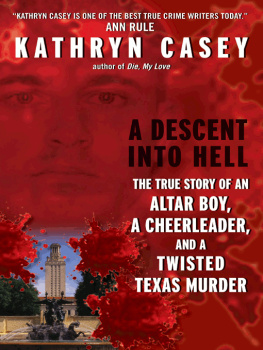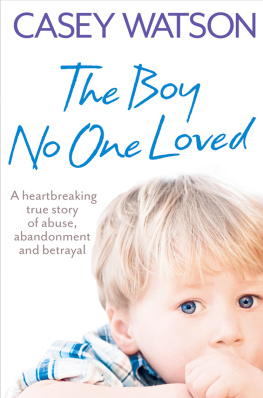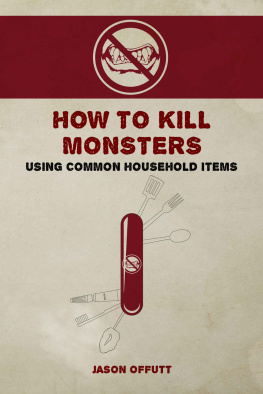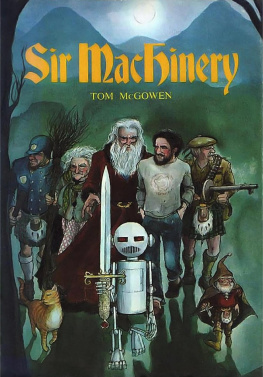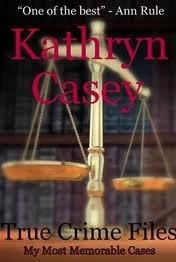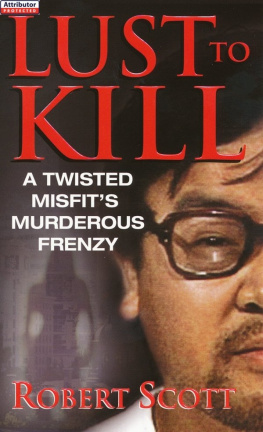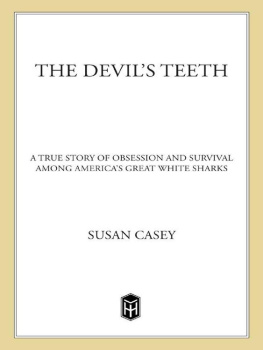
As with any project of this scope, there are many to thank. First, all those who shared their experiences with Kent McGowen and Susan White so freely with me. Many of you are mentioned by name in the book; others are not. You know who you are. Second, my able readers who critiqued the original manuscript: Jane Farrell, Andrea Gross, and Ken Hammond; for her support, Claire Cassidy; my agent, Philip Spitzer; my editor at Avon Books, Sarah Durand; my information guru, Jim Loosen, at JAL Data Services in Seattle; Katie Guillory for her secretarial assistance; private investigator Rob Kimmons; reporter Steve McVicker; and the many capable and honorable members of Houstons law enforcement community I met and interviewed. While this is a book about a bad cop, please remember, such officers are an oddity, not the rule.
Id also like to thank my editors at Ladies Home Journal: Myrna Blyth, Susan Crandell, Pamela Guthrie OBrien, and Shana Aborn. Its through my long relationship with each of you and the magazine that Im able to maintain the freedom to take on such projects.

In an attempt to safeguard the privacy of some individuals, the author has changed their names and altered minor, identifying characteristics; such instances include Sherri Brandt, Pete Rodriguez, Sara Williams, Gary Roberts, Maggie, Alan Jefferies, Beetle, Karen, and the hairdresser, Paul.

Australia
HarperCollins Publishers (Australia) Pty. Ltd.
25 Ryde Road (PO Box 321)
Pymble, NSW 2073, Australia
http://www.harpercollinsebooks.com.au
Canada
HarperCollins Canada
2 Bloor Street East - 20th Floor
Toronto, ON, M4W 1A8, Canada
http://www.harpercollinsebooks.ca
New Zealand
HarperCollinsPublishers (New Zealand) Limited
P.O. Box 1
Auckland, New Zealand
http://www.harpercollinsebooks.co.nz
United Kingdom
HarperCollins Publishers Ltd.
77-85 Fulham Palace Road
London, W6 8JB, UK
http://www.harpercollinsebooks.co.uk
United States
HarperCollins Publishers Inc.
10 East 53rd Street
New York, NY 10022
http://www.harpercollinsebooks.com

August 25, 1992
Shots fired, one down, a thin voice crackled over the police-band radio at 12:30 on a muggy Houston night. Immediately the call went out, as it always does when a cop shoots a civilian. Ambulances, squad cars, a crime-scene unit, Internal Affairs investigators, and representatives from the district attorneys office all converged in the quiet neighborhood of expensive brick homes amid towering pines bordered by manicured lawns.
By the time Assistant D.A.s Don Smyth and Edward Porter arrived, Susan White, a forty-two-year-old former mortgage broker, was being barreled through the night in the back of an ambulance, one paramedic pounding on her chest as another forced oxygen into her lungs.
Outside, in the backseat of a squad car, Whites son, Jason, watched. Seventeen, but small for his age, hed awakened to the shrill scream of the burglar alarm. Moments later, the pop of gunfire and two uniformed deputies rousted him from bed and pulled him down the stairs and past his mothers darkened bedroom, where another deputy stood above the outline of her thin body covered by a bloody sheet. Despite the summer heat, the boy shivered, his eyes saucer-wide.
Smyth, a wiry man with a ruddy complexion, glanced at the boy, then cornered the detective in charge. Whos the shooter? he asked.
The detective pointed to a uniformed deputy in his late twenties who stood jawing with a cache of others. Kent McGowen, the detective said. He was with two other deputies, serving a retaliation warrant. Shed threatened a police informant. The deputies told her they had a warrant, but the woman wouldnt open up. They broke down the door. She pulled a gun. McGowen shot her.
It all seemed simple enough, but Retaliation? Smyth repeated. Something didnt smell right. He eyed the house and figured it was worth a quarter million, easy. Retaliation, making verbal threats against a police informant, was a third-rate felony, with a bond of $2,000. Where was the urgency? The woman wasnt a flight risk. Why would they break down a door in the high-rent district in the middle of the night to serve a warrant on a trash-heap charge like retaliation?
Smyth pulled Porter to the side. Cover it like a blanket, he whispered.
Porter nodded and Smyth guessed his gut was acting up, too. They were a team. Smyth was chief of the D.A.s Civil Rights unit. Porter worked under him. It was department policy: When a cop shot a civilian, someone from Civil Rights made the scene. Theyd done a lot of these investigations together, too many, and too often in the middle of the night.
While Porter, a balding man with a round face and brown eyes that appeared perpetually skeptical behind half-moon glasses, interviewed witnesses, Smyth analyzed the scene. On a pad he sketched the layout of the house, noting the back door splintered off its hinges and a black shoe print where someone had kicked it in. He found no signs of a struggle in the kitchen or the den.
In the living room, Smyth noted blood smears on the plush pale gray carpeting and torn, bloody gauze discarded in the adrenaline-pumping flush of attempting to save a life. Is she dead or alive? the prosecutor wondered.
Smyth made his way past the crime-scene officers into the bedroom. It was a jumble: clothes strewn on the floor; scribbled-on yellow legal pads piled on the desk; a half-empty Burger King drink cup sweating on the headboard; black-and-white photos scattered on the dressermodeling-type photos of an attractive, tall, blond, athletic woman in her early forties. He noted the name printed across the bottom SUSAN WHITE the shooting victim.
Next Smyth inspected the waterbed, awash in blood; a fine, deep crimson spray fanned the wall behind it. White must have been in bed when McGowen pulled the trigger, sending a bullet careening through her profile. Another sliced through her chest. A third shattered her right arm.
Moments later, Smyth met on the front lawn with Porter, McGowen, and an attorney supplied by the policemens union.
Is he willing to tell us what happened? Smyth asked. He sensed the young cop wanted to talk. Hed been pacing the front lawn, recounting his story for nearly everyone on the scene. Twice Smyth ordered the other deputies to contain McGowen. Put him in a squad car and tell him to shut up, hed cautioned. He wanted McGowen quiet, thinking about what had happened, collecting his thoughts.
Hes ready, McGowens attorney answered.
Smyth had conducted hundreds of walk-throughs in his nearly a decade of investigating cops. But this time he looked at Kent McGowen and did something hed never done before: He pulled out a tape recorder and switched it on. His instincts whispered, Cross every t, dot every i.
The walk-through began at the front door, McGowen detailing for Smyth, Porter, and the others how hed knocked and ordered the woman to open up. The woman was a major turd, he charged. Her son was involved with big-time gun dealers who trafficked in automatic weapons. McGowen had arrested the kid two nights earlier, using a C.I., a confidential informant. It was the C.I. White had threatened to kill.


